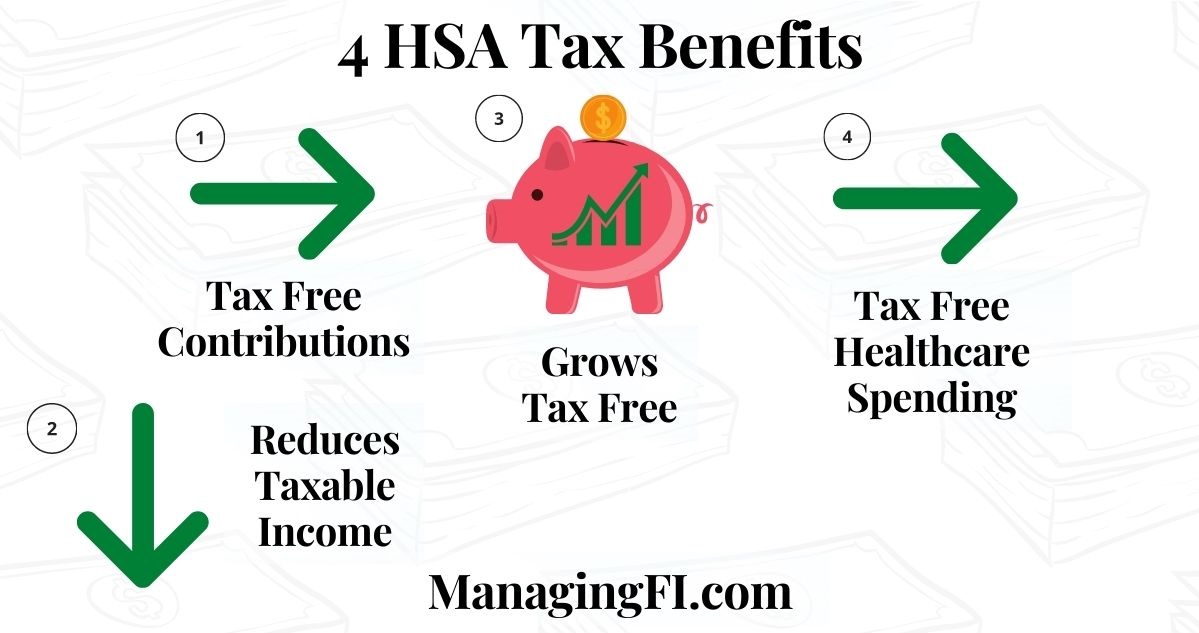BLUF: The holidays are full of pressure to do things that can make you spend more, take your time and stress you out. Take control, make changes and turn the holidays into the season that you want for your family.
In the US there’s a commercial machine cranking up in November that’s doing everything in it’s power to separate you from your cash. Tis the season to put you in debt and make you spend money that you otherwise wouldn’t. Marketing goes into overdrive sending nonstop messages that you need to show people you love them by spending money.
Mercedes always has some ad showing that Santa actually drives a Mercedes and you should give one for Christmas.
If buying a Mercedes is a little out of your price range, how about a GMC? Oh wait, we’ll take that to an absurd level too with the idea that you’ll buy his and hers GMCs without your spouses input. I think Mrs. MFI would be gifting divorce papers if I pulled that crap.
Yeah, stupid. I thought that SNL perfectly captured the absurdity of these commercials in their own parody.
Under Pressure To Spend
Everywhere you look, there’s pressure to celebrate the holidays a certain way and often the emphasis is on spending. It starts with the infamous black Friday which pre-pandemic had bled into Thursday causing some families to cut Thanksgiving short in the name of shopping. Really?

After that there’s small business Saturday, Cyber Monday and on and on until Christmas. That’s when you return all the gifts you hated, spend the gift cards you received and spend more on the after holiday sales.
How bad are the holidays for people when it comes to money, time and happiness? Well, here are some head shaking stats:
- 22% of the US population goes into debt from holiday shopping each year.
- In 2020, Americans spent $1,000 on average. $650 for gifts. $230 for decorations, food, cards and other holiday goods. $117 in non-gift buying.
- On average American women spend 20 hours gift shopping and men 10 hours during the holidays.
- 62% of Americans expect to get a gift that they don’t like.
- Sources: https://capitalcounselor.com/holiday-spending-statistics/
Let’s recap: Every year people spend $1,000 on average and go into debt spending massive amounts of time to buy gifts and some people aren’t going to like. Is this really the most wonderful time of the year for you?
My Holiday Stressors

When it came to Christmas as an adult, it always stressed me out. Not from a financial perspective, fortunately, because we weren’t huge spenders. There are a number of things I was started to dislike about how we did Christmas:
- It was stressful figuring out gifts for Mrs. MFI . She’s not a very materialistic person so I always struggled with what to get her. She doesn’t buy clothes, jewelry, house decorations or things for herself. We do experiences and trips together and she reads free content a lot.
- I hate shopping with every fiber of my being. I’m probably not unique in this as a guy but shopping to me is exhausting. I aim to research, select and buy whatever I need with as little energy spent as possible. You will not find me bargain hunting from store to store. I can run for 9 hours in an ultra marathon but standing around a store for 3 hours feels more tiring. Don’t judge.

- Gifts with relatives seemed ridiculous. Let me know if this sounds familiar to a conversation that you’ve had with a relative or friend:
- Me: “Sis, what do you want for Christmas?”.
- Sis: “A Target gift card. You?”
- Me: “An Amazon gift card.”
I mean, come on. We’ve about to go out and spend effort to just exchanged a more restrictive form of money with each other. You’re also trying to figure out the “right” amount to give each other so that someone doesn’t feel like they gave too little.
Or, does the gift exchange turn into the same safe gifts swapped year after year? Candles, wine, food items, pet items. It was all a lot of effort to figure out and shop for something that the other person probably doesn’t really need or care about. It’s all a lot of time, energy and stress to show “love” when there are better ways to do it!
- I hated coming up with a Christmas list. I don’t really need a lot and if I want something I really need during the year I buy it. It was always stressful and hard coming up with ideas because it always felt forced in this window of time around Thanksgiving. Sorry, I’m too busy stuffing my face with pie to think about gifts. To come up with a list I need to research exactly what I want and where you can get it. It’s like doing all the parts that I hate about shopping and then not actually getting the item for a month later (maybe)!
- Making your house look festive. What do I dislike second most in the fall behind raking leaves? Putting up Christmas lights. I never went overboard but even the thought of putting strings of lights up on a couple of outdoor trees was not appealing. Sorry, there’s football on TV. I don’t want to be Chevy Chase making my house look like Christmas Vacation.

We also used to do an indoor Christmas tree with fancy matching colored bulbs. It looked nice when done but I wasn’t motivated to help because I didn’t enjoy the activity of it much.
Creating Our New, Low Stress, Holiday Season
Sorry if that seemed like a lot of negativity. I don’t hate Christmas. I loved seeing my family and eating many of my favorite foods. What to do about it?
The answer was to start making changes with a focus on the things that you can control.. Specific, thoughtful changes that would let us keep all the things that we loved and improved or eliminated all the things that we didn’t love. I’ll let you in on a secret that should be obvious.
You can do the holidays any way that you want!
No, really. Contrary to popular beliefs, you don’t have to cave to the social pressures of what the holidays should be like. It’s your life and it’s possible to both balance your desires with the desires of others. Here are the changes that we’ve made so far.
Buying Gifts
This one topic has been the largest focus in our holiday changes because it has such a ripple effect. It takes time to: come up with gift lists, research gift locations, shop for gifts, get wrapping paper/bags, wrap the gifts, transport the gifts, spend the gift cards you received, return the gifts that you don’t like and give away the gifts that you can’t return.
We have experimented and changed gift giving over the last 5 or so years in an attempt to reduce those stressors and pain points. In summary, we made the following changes in chronological order:
- Normal gift giving, no spending limit – pre-FI thinking and before Mrs. MFI and I were married. Probably spent $200-$500 on each other depending on the year.
- Normal gift giving with a total dollar limit – Give whatever gifts you want but stay within a total per person budget of $100. We both selectively ignored this limit which caused problems.
- “Stockings only”, lower total dollar limit – Smaller gift giving that is intended to fit into a stocking although not absolutely required. $50 limit.
- No presents for each other – No wrapped gifts and no stockings. Just doing things together leading up to and after Christmas. Still exchanged gifts with extended family.
- No presents for each other and extended family – Extending our present-free activities to include gift giving that used to occur with select extended family.
- No presents for each other and extended family, adding charitable giving – Keeping our plan the same as last year excepting now adding in adopting a child and adult for Christmas (this year). We have an 8 year old boy and their caregiver to shop for. Mrs. MFI is very excited to get them Lego’s and an RC car that’s on their wish list!

As you can imagine this is years worth of changes. The more Mrs. MFI and I started to talk about what we liked and didn’t like, the easier it was to start making meaningful changes to improve our holiday experience.
Getting my extended family to be okay with no gift giving with each other was surprisingly easy. I simply proposed it via e-mail and everyone was pretty onboard. The takeaway from that experience is that others were likely feeling similar to us but didn’t bring it up. You might be surprised to find that others might feel like you do if you just have the courage to talk about it.
One change that you might have noticed was that we added BACK some gift buying at the end. That’s actually a change for this year (2021). Mrs. MFI really enjoys black Friday and the idea of gift giving. I enjoy charitable giving myself and helping others.
As a result this year we’re still not giving gifts to each other but Mrs. MFI has taken the lead on adopting a family and shopping for them. It’s a great compromise to both fill a gift giving desire and help out people in need.
That’s the thing to remember about making changes and trying things. There’s nothing that says that you can’t change something back if it isn’t working for you.
Streamlining Other Holiday “Obligations”
There are a number of other things that we used to do around the holidays that I won’t call fun, but felt obligated to do.
Holiday Cards
Sending holiday cards to friends and family. This is one of those things that costs time and money and can vary widely for either depending on how you do it.
Why send them at all? We still enjoy receiving photo holiday cards from others and don’t keep in touch with everyone via social media so this is one way to stay connected.

We both hate writing things by hand inside cards so we’ve moved from blank cards that we write in to photo cards made by Shutterfly. Mrs. MFI designs them and we order then in early November to get the best discount.
To minimize the work we make a Word document setup in label format with all the names and addresses and then print out the labels at home on a laser printer.
For the return labels I collect the free return label stickers that are sent to us throughout the year by organizations that we’ve previously donated to. I’ve yet to have to buy any of these but I’d definitely spend the $5-$10 on Shutterfly if necessary to avoid the writing.

Simplifying decorations
I love the way holiday lights look. I hate putting them up and taking them down. I used to wrap my outdoor evergreens with lights but that got old. The solution? Buy a couple of sets of these LED spiral trees. They store flat and take about 10 minutes each to setup.

We’ve always had a fake tree which keeps things pretty simple when it comes to setup and teardown. There’s a little work to replace bulbs that burn out or are loose but it’s kept this tree going for 15 years now.
One of the ways that we get happiness dividends is by putting up our Christmas ornaments. You see, everywhere we travel to we buy something that can serve as an ornament. Putting ornaments on the tree serves as a trip down memory lane helping us recall and talk about the great trips that we’ve taken.
One thing we have simplified is our ornaments. Mrs. MFI used to also put up colored bulbs but while it looked nice, it was extra work. So, we don’t do that anymore.

Planning Experiences
The great thing about reducing the gift portion of the holidays is that it frees up time to do all sorts of other activities. We, like many, have a variety of seasonal things that we like to do.
As we get into November we start to map out the different things that we want to do:
- Plan a day or two to drive around with hot tea and look at the best light displays at local houses.
- Go to a local holiday celebration of lights, music and food.
- Go to a Christmas festival put on by local amusement parks.
- Make holiday cookies
- One new thing that we’ve never done before. This year we made our own glass ornaments by hand!

Rotating Holiday Traditions & Experiences
I love spending money and time on experiences and traditions. However, the more you do something, the less special they become to me. For that reason I like to sometimes skip a year or two of doing something that we’ve always done year after year.
It make me appreciate it that much more when we return to doing it the next year. It also frees up space to try more new things. You never know what new thing that you try will turn into a new favorite!
Making Your Own Holiday Season Happier
I’m not special. All of us have the ability to step back, reflect on what things we’d like to change and take action! It doesn’t matter how small the change, just take action.
- Take a step back and think about what you like and don’t like about the holidays.
- What traditions do you look forward to each year? What activities make you light up?
- What things do you hate doing? What stresses you out? What takes up the most time for you?
- If the change involves others, have a conversation! Nothing will change unless you let the world know what you want. It starts with being honest about how you feel. You might be surprised that others feel the same way but were afraid to speak up.
- I’d recommend starting with an easier topic if you’re nervous. The “optional” gift exchange at work that you hate but feel pressured to do each year. Exchanging gift cards with extended family members.
- Be clear about what you don’t like and propose an alternative. If you’re open to other ideas then ask the other people what they think.
- Nervous? What is the worst thing that can happen by making this change? Often times the worst thing that can happen after making a change is that you aren’t happy with the result and you just go back to the way things were before.
- Make a change, even a small one. Reflect on that change.
- Was that change better? Worse? What did you learn? What could you do differently next time?
Like the content? Click here to subscribe to the e-mail list and have the articles delivered to your inbox.








































